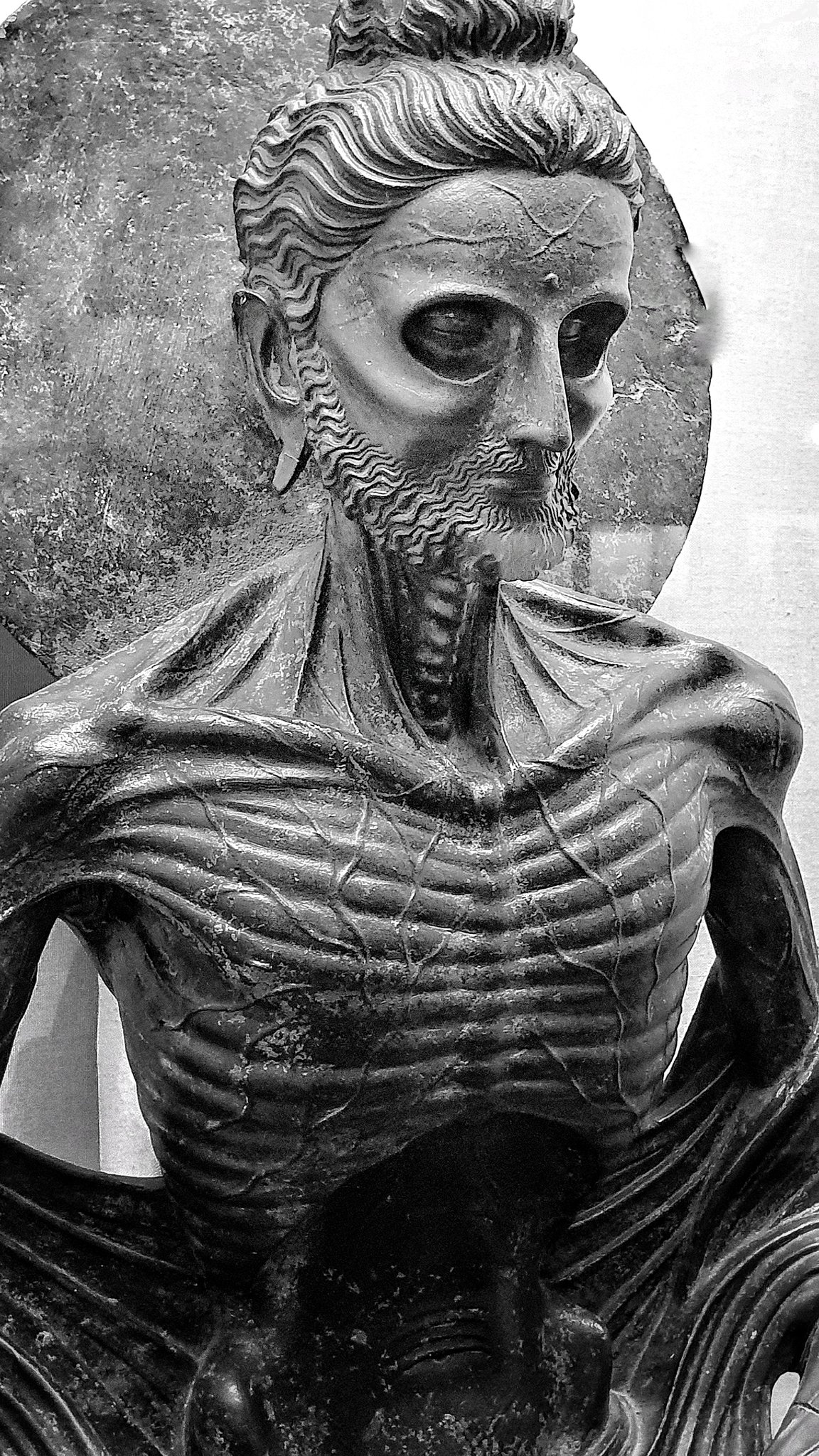This beautifully built Gandharan statue depicts the story of the young Prince Siddhartha on his journey towards enlightenment.
This smaller-scale statue, standing at 33″ tall and 21″ wide, was discovered in Sikri, Pakistan in the 19th century. Thought to be built in the 2nd century, this schist stone sculpture is not only a huge discovery for the Gandhara period, but is also one of the most important artifacts in Buddhism.
Just from looking at the statue, one does not even have to be aware of its history to truly be sucked into the spirituality and beauty of Siddhartha’s presence.

Siddhartha to Buddha
This statue of the Fasting Siddhartha, according to Buddhism, depicts the sacrifices and agony Prince Siddhartha put his body through on his journey to become enlightened. After leaving the comfort of his home, the young man began a six year physical and mental transformation to rid himself of all desires in the effort to end Saṃsāra1 . By the end of his six years, Siddhartha had found himself in a 49 day fast where he was surviving off of a single grain of rice for physical nourishment. This point in his life that the Fasting Siddhartha statue depicts. His starved body with visible tendons, veins and bones is the proof of his mental strength and persistence to gain enlightenment.
Siddhartha continued with this practice until he realized his body would die before reaching enlightenment. A local priest’s daughter ran and gave Siddhartha a bowl of rice cooked with the essence of 1000 cows milk. After eating the food, Siddhartha had the strength to meditate, and realized Buddhahood. It’s believed he was only able to truly be enlightened after reaching a middle ground between self-indulgence and self-mortification.
- The cycle of death and rebirth to which life in the material world is bound.
My Museum Poster

For my poster project, I decided to draw the Fasting Siddhartha sitting in it’s home at the La-hore Museum in Lahore, Pakistan. I found a high-quality image of him on the internet to use as reference as I drew the statue on Photoshop. Once I was finished, I brought my illustration into Illustrator where I designed the layout for the background and text.
Overall, I’m very proud of this project. The easiest part for my was definitely the drawing of the statue itself but I’m very happy with the way the background turned out even though I’m not as confident in Illustrator. One thing I do need to work on for next time however, is my ability to edit text to really achieve an effect I’m looking for. I feel my text is definitely the weakest aspect of my project and I wish I had the skills or time to go back and edit more.
Links
- https://artsandculture.google.com/asset/fasting-siddhartha/QgGcgQazjovxxg?hl=en
- https://www.tsemrinpoche.com/tsem-tulku-rinpoche/one-minute-story/the-meaning-behind-the-fasting-buddha-statue
- https://en.wikipedia.org/wiki/Sa%E1%B9%83s%C4%81ra#In_Buddhism
- https://www.budsas.org/ebud/whatbudbeliev/214.htm
- https://tribune.com.pk/story/2357686/the-agony-before-enlightenment

Leave a Reply